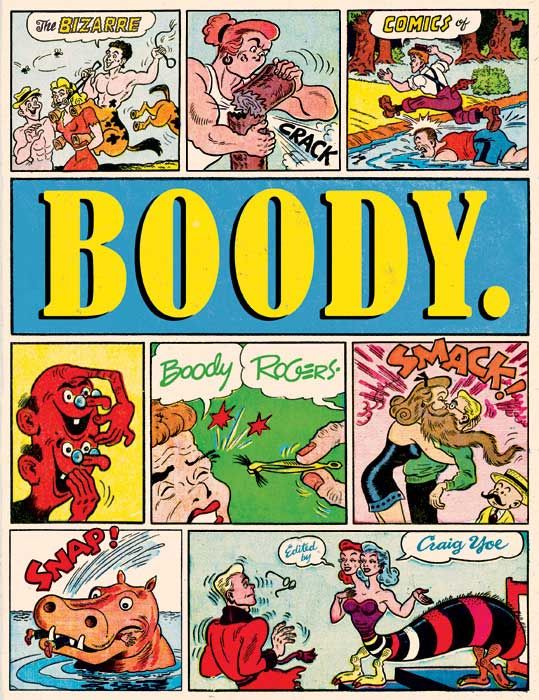"Boody. The Bizarre Comics of Boody Rogers" begins with an epigraph by Rogers himself which says, "Being nutty wasn't necessarily a prerequisite for being a cartoonist, but it surely helped." This 144-page softcover collection edited by Craig Yoe features some of the nuttiest comics you'll ever read. From the hillbilly hijinx of "Babe" to the wacko sci-fi underworld of "Sparky Watts" to the hipster hullabaloo of "Dudley, the Prince of Prance," Boody Rogers presents an off-kilter world of hilarity that seems like an oft-unheralded link between the Golden Age of the newspaper strips and the underground cartoonists of the 1960s.
Yoe, in his foreword, clearly prefers the "Babe" strips ("I envy those of you discovering 'Babe' for the first time," writes Yoe) and opens and closes the volume with "Babe," but it's "Sparky Watts," intrepid explorer of the insect world, that really steals the show in this collected edition. As silly as "Babe" is -- and it's pretty silly, and a lot of fun, with the Amazonian Babe and her Paul Bunyan-esque antics which escalate from panel to panel -- "Sparky Watts" is even more gloriously ridiculous, with Sparky constantly shrinking down to near-microscopic size and visiting with the strange creatures who live beneath the finely-manicured suburban lawns of his town. These creatures -- part Dr. Seuss, part deranged nightmare -- tend to take Sparky through strange (if brief) adventures, but none of it ever amounts to anything more than an exploration of the weird world in which they live. It's all about the bizarre imagery and dream-like logic of the story in "Sparky Watts," and those strips are absolutely joyous.
And I haven't even bothered to mention the episode involving Sparky Watts, a carnival, and two hats with legs trying to get married.
All of the comics in this volume originally appeared in the late 1940s and early 1950s. The work reflects the context in which it was created: "Babe" is an amplification of the bare-footed wackiness of "Lil' Abner," filtered through Rogers's own unique perspective; "Dudley" embraces the pop culture of its time; and "Sparky Watts" reflects an early sci-fi innocence, set in mid-century suburban America. But unlike some other archival projects, Yoe's effort here isn't to present pristine glimpses of the past, or to examine these comics as historical artifacts. Yoe presents these comics to us as living, evocative stories. Though clearly the product of a different era, there's an unrestrained creative virtuosity Boody Rogers's work.
This volume celebrates Rogers by letting the comics speak for themselves in their own, whimsically odd, way.

